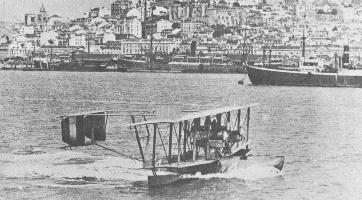


|
THE CREW OF THE NC-4 was as follows:
LtCdr Albert C Read, USN,commander and navigator Lt Walter Hinton, USNR, pilot Lt Elmer F Stone, USCG, pilot Lt James L Breese, USNR,flight engineer Chief Eugene S Rhoads, USN,flight engineer Ens Herbert C Rodd, USNR,radio operator |
| SPECIFICATIONS
Span: 126 ft. 0in. Length: 68 ft. 3 in. Height: 24 ft. 4 in. Gross Weight: 4500 lbs. Empty Weight: 16,000 lbs. Engine: Four Liberty 400 hp 12-cylinder Vee-type) PERFORMANCE Max speed: 91 mph. Range: 1,470 miles Manufactured by US NAVY/Glenn Curtiss Aircraft |
|
Home |
Links
Gee Bee |
|
Pictures |
Golden Age of Aviation | Organizations | Book Store | Special Interest | Weather | Golden AgeHistory | Historical Records | Engines | Hangar | Written & Edited by Darrell Graves |